This entry includes a walking tour! Take the tour.
Introduction
Text-to-speech Audio
Images
Birdseye view of Ritter Park, with view of 8th Street to the left, circa 1913.
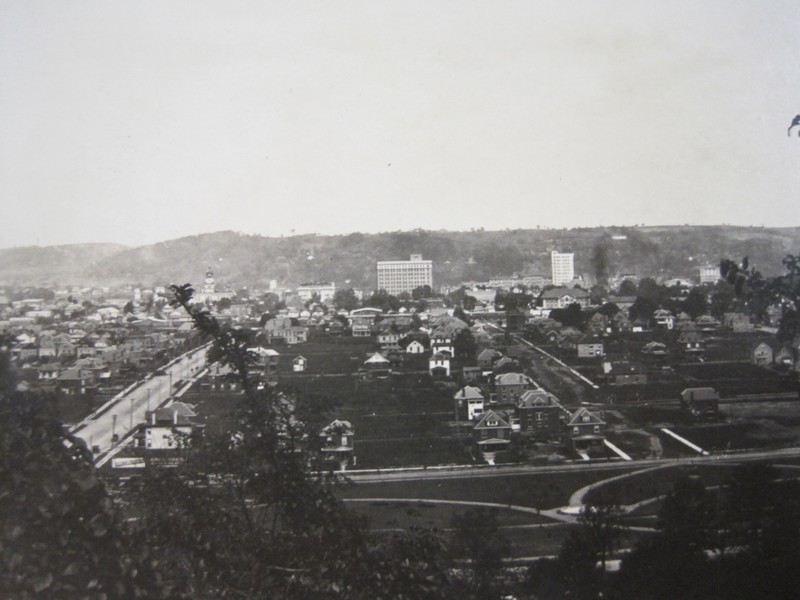
Huntington residents watch soldiers drill practice on the corner of 10th Street and 13th Ave at the location of the current stone arch entrances.

Panoramic view of Huntington from 1910 with Ritter Park, and South Side areas undeveloped.
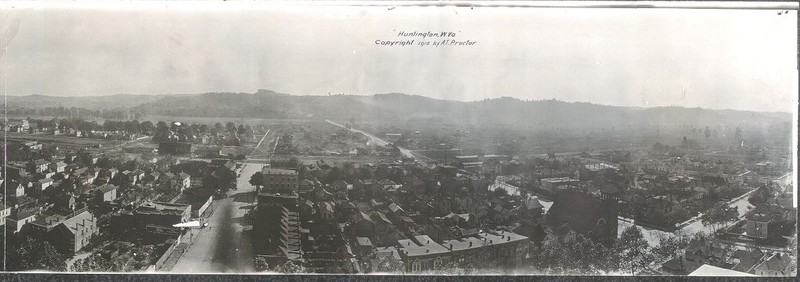
Ritter Park originally featured a small lake. Today, this area forms the center of the park's "green space" and is enjoyed by hundreds of residents each day.
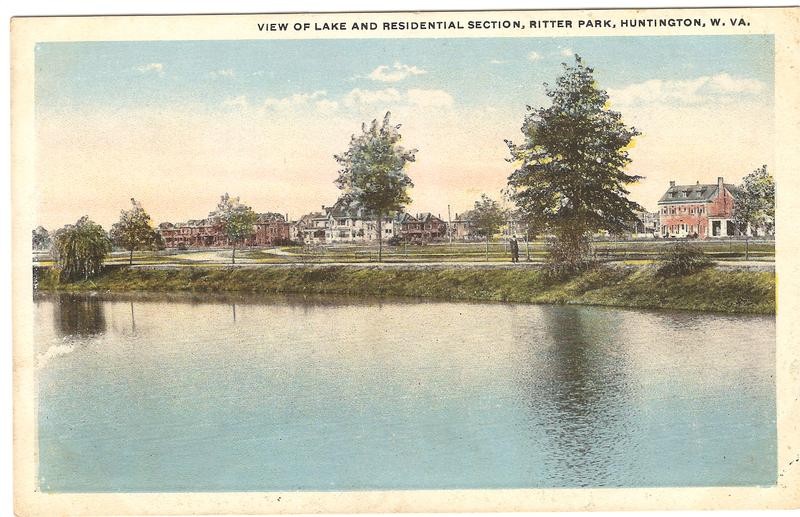
James Lewis Caldwell Memorial, formerly located atop Gobblers Nob, erected in 1926, demolished in 1945.
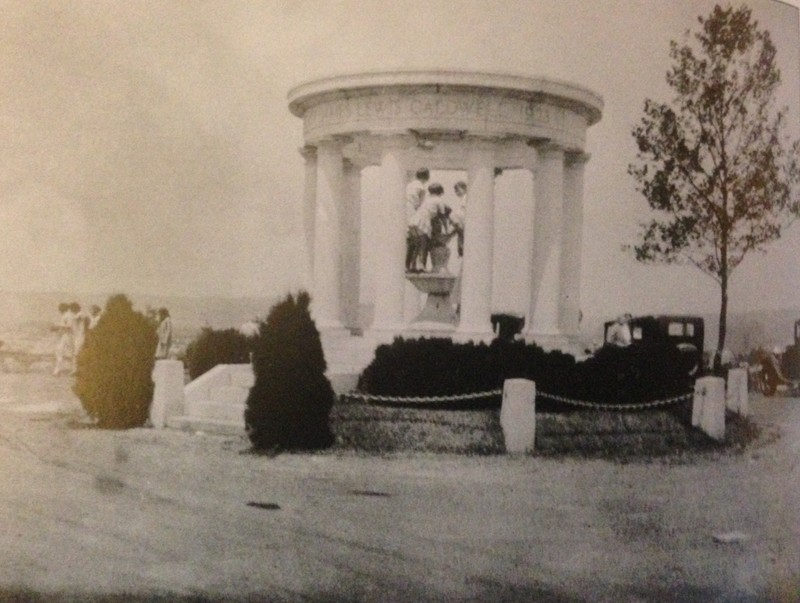
Current viewpoint. Photo courtesy of Foodie in WV.
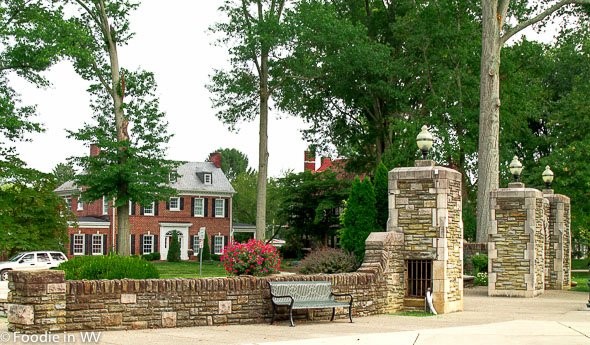
Birdseye view of Ritter Park, with view of 8th Street to the left, circa 1913.

Huntington residents watch soldiers drill practice on the corner of 10th Street and 13th Ave at the location of the current stone arch entrances.

Panoramic view of Huntington from 1910 with Ritter Park, and South Side areas undeveloped.

Ritter Park originally featured a small lake. Today, this area forms the center of the park's "green space" and is enjoyed by hundreds of residents each day.

James Lewis Caldwell Memorial, formerly located atop Gobblers Nob, erected in 1926, demolished in 1945.

One of the main entrances into Ritter Park is this stone archway, believed to have been built by the WPA in the 1930s. Image courtesy of the Library of Congress.
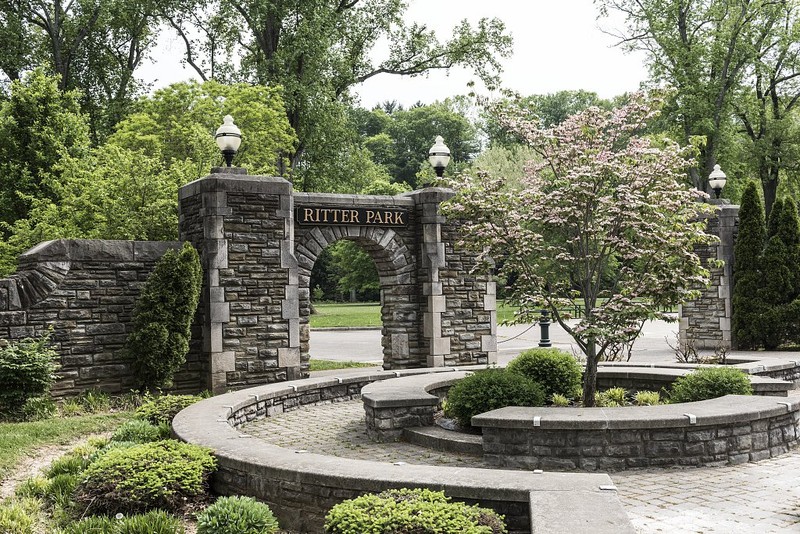
One of the main entrances into Ritter Park is this stone archway, believed to have been built by the WPA in the 1930s.
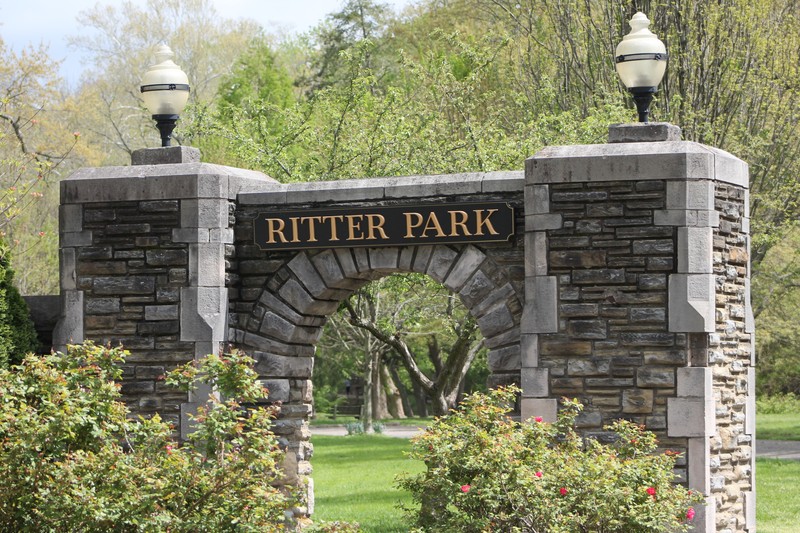
Backstory and Context
Text-to-speech Audio
The city of Huntington was incorporated in 1871, and over the next few decades developed into an industrial and railroad community. The south side of Huntington, in the area around Four Pole Creek, remained largely undeveloped and grew a reputation for crime and vice. Little else existed there except for some farm land and homes belonging to workers from local factories. In 1892, the area served as the site of Cabell County’s only public execution; a man named Allan Harrison was hung here after being convicted for the murder of Bettie Adams.
By the early 1900s, many residents of Huntington sought for a public park to be created. A failed referendum was held in 1880 to purchase land for a park between Seventh and Eighth streets, and multiple other proposals for a park also failed over the next few years. Meanwhile, the City Council purchased fifty-five acres of land around Four Pole Creek in 1908 with the intention of building an incinerator. Their hope was that an incinerator would remedy the issue constant smoldering from the city dump, which was located in the Fairfield neighborhood. Reportedly, there was widespread opposition in the city to this plan. Lumber magnate and businessman Charles Lloyd Ritter, who built a mansion near the proposed site of the incinerator, donated an additional twenty acres to the city on the condition that they build a municipal park at Four Pole instead. Mayor Rufus Switzer supported the idea of a city park, and hired New Jersey landscape architect J. T. Withers to design one. Wither’s plan, however, was never used as Switzer was soon voted out of office.
Ritter Park, named after Charles Lloyd Ritter for his donation, opened on September 11, 1913. Little construction had actually been done at the time, and further development of the park did not begin until after World War I. One notable early feature of the park was a small lake that was made on the north side of Four Pole Creek. It was named Lake Chaposcane, an amalgamation of the first two letters of the names of the city commissioners. The lake was reportedly not very popular with locals, as the water was constantly a muddy brown color. After a child drowned in the lake it was drained sometime in the 1920s. In 1923, a monument to businessman James Caldwell was erected on a hill called Gobbler’s Knob. It was demolished around 1945, after years of repeated vandalism and neglect.
The Huntington Board of Park Commissions was established in 1925 and set to work developing Ritter Park. Construction of the park continued throughout the 1920s and 1930s. A number of roads, bridges, and stonework were likely built by volunteers serving with the Works Progress Administration during the Great Depression. Following the reopening of Ritter Park, many new homes were constructed alongside the park up until the 1940s. They included architectural styles such as Tudor Revival, grand Colonial, and Classical Revival. Around 1936 a rose garden was created, designed by Park Commission member Gus C. Wofford.
Over the years a number of amenities were added to Ritter Park including tennis courts, picnic shelters, walking trails, an amphitheatre, a playground, a dog park, and public art sculptures. The park today is one of the most popular outdoor recreational centers in the Huntington area. It hosts a number of community events each year including plays, concerts, festivals, photo shoots, picnics, reunions, and weddings. In 1990 the park and surrounding neighborhood were added to the National Register of Historic Places as the Ritter Park Historic District. In 2012, the American Planning Association named Ritter Park one of the “10 Great Public Places in America.”
Charles Lloyd Ritter, for which the park is named, was born in Muncy, Pennsylvania, in 1865. Ritter first entered the lumber business in Oakvale, Mercer County, West Virginia, in 1889. A few years later, he took his business to Welch and founded the Tug River Lumber Company; later he moved his enterprise to Bluefield, then Bristol, Virginia, and finally Huntington, in 1901. Ritter married Marshall College graduate Mabel McClintock and invested in Huntington commercial properties, lumber, coal, gas, and mineral developments. He was a director of the First National Bank of Huntington, president of the Ritter-Burns Lumber Company, the Ritter Hardwood Lumber Company, the C. L. Ritter Lumber Company, the Central Realty Company, the Huntington Land Company, the Rock Castle Lumber Company, the Turkey Foot Lumber Company, the Norfolk Land Company, the Empire Furniture Company, and others. Ritter died in 1945.
Sources
Casto, James E. Huntington Chronicles. Charleston, SC: The History Press, 2018.
Casto, James E. “Lost Huntington: The Lake at Ritter Park.” Herald-Dispatch. December 29, 2013. Accessed July 7, 2019. https://www.herald-dispatch.com/special/lost_huntington/lost-huntington-the-lake-at-ritter-park/article_05710240-57d1-5145-9962-1453c254f370.html.
Clarkson, Lee R. “The Ritter Park Rose Garden: a rose by any other name wouldn’t smell as sweet.” Huntington Quarterly 52 (1999). Accessed July 7, 2019. https://www.huntingtonquarterly.com/2018/09/26/issue-52-rose-garden/.
Greater Huntington Park & Recreation District. “Ritter Park” (video). Posted January 30, 2017. Accessed July 8, 2019. https://www.youtube.com/watch?v=cBuTZiXXSRU.
Hager, Beth and Austin St. Clair. “Ritter Park Historic District.” National Register of Historic Places Registration Form. September 1990. Accessed July 7, 2019. http://www.wvculture.org/shpo/nr/pdf/cabell/90001774.pdf.
Highsmith, Carol M, photographer. Archway in Huntington, West Virginia's Ritter Park. Huntington Huntington. United States West Virginia, 2015. -05-07. Photograph. https://www.loc.gov/item/2015631843/.
Miller, Tom D. “Ritter Park.” e-WV: The West Virginia Encyclopedia. February 11, 2013. Accessed July 7, 2019. https://www.wvencyclopedia.org/articles/89.
Pratt, Mary Lou. “Charles Lloyd Ritter.” e-WV: The West Virginia Encyclopedia. December 8, 2015. Accessed July 8, 2019. https://www.wvencyclopedia.org/articles/87.
Franklin Clark
